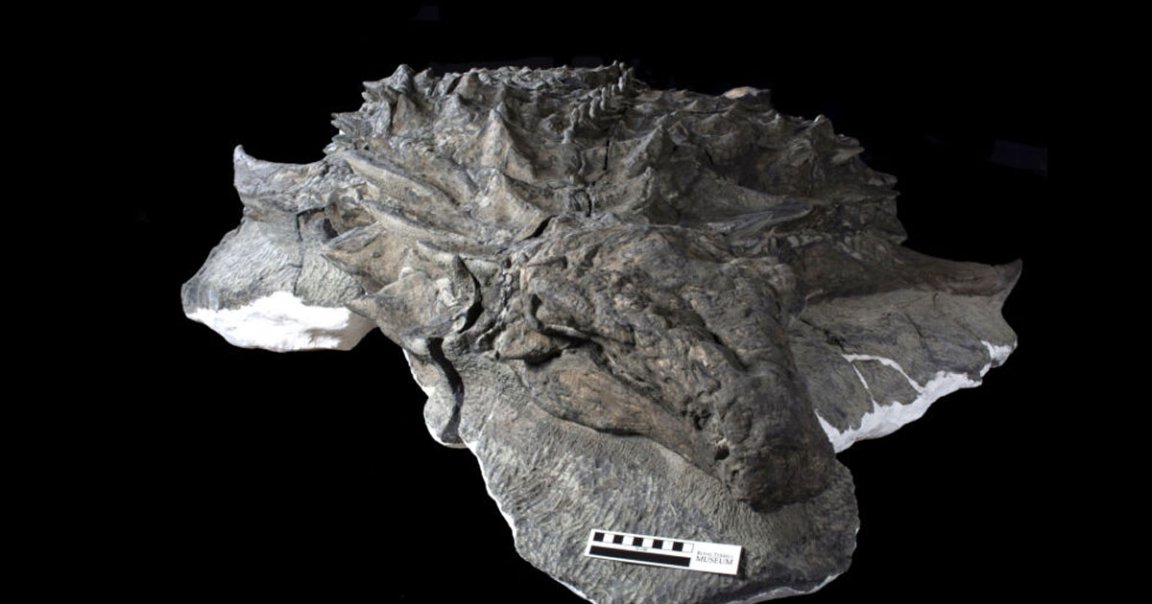
Mesozoic Mummy
In 2011, archaeologists uncovered one of the most — if not the most — pristine dinosaur fossils yet: a near-whole ankylosaur, complete with its jagged spikes, most of its limbs, armor coating, and some of its guts and stomach contents. The most amazing detail, though? Its uncannily preserved face and skin.
It took Mark Mitchell, a technician at Royal Tyrell Museum, an absurd 7,000 hours and nearly six years to meticulously exhume the fossil by delicately chipping away at the surrounding stone. For his efforts, he had the newly discovered specie of nodosaur — a type of ankylosaur — named after him: Borealopelta markmitchelli.
“During preparation, I would piece together the blocks like a puzzle, and the animal started to really take shape,” Mitchell said in a new interview with Ars Technica, describing the painstaking process.
“Right before Christmas one year,” he continued, “I had pieced together both sides of the neck and the head, and you could really appreciate the impressiveness of the specimen and that this was a living creature with astounding preservation.”
That’s a holotype for the ages. The museum’s curator, Donald Henderson, told Ars that he wagered it was a literal “one in a billion” find.
World Building
Researchers were able to get their hands on the remarkable specimen in 2017 after Mitchell had finished preparing it, and they’ve since published a series of impressive studies.
One such study led by Caleb Brown, a curator at Royal Tyrell, examined the bone structure known as osteoderms found on ankylosaurs, which in less freakishly preserved specimens, usually fall out of place.
These ones remained in their natural spots, however, and Brown measured all 172 of them.
“Many armored dinosaur skeletons are preserved disarticulated, meaning their bones are all jumbled up,” Brown told Ars. “Having the osteoderms preserved in life position in this specimen, and other specimens, can give us clues as to how to reconstruct those specimens where the position of the armor is less clear.”
His study’s big takeaway? The suggestion that those iconic spikes aren’t actually meant to stave off predators, but to show off in order to attract mates.
Another study on the specimen led by Brown and his colleagues posits that the Boreapelta used a form of camouflage known as countershading, which heretofore hasn’t been observed in creatures of its size, i.e. big ones. As Ars notes, the fact that such a formidably armored dinosaur also had to employ camouflage to survive may imply that the Cretaceous period was even more cutthroat than once thought.
And the most recent study, published this month, offers an extremely rare look at the diet of dinosaurs like the Borealopelta.
So while its fate may be set in stone, the Borealopelta continues to shape our understanding of the almost alien world of the dinosaurs.
Read more: Researchers look a dinosaur in its remarkably preserved face
More on dinosaurs: In Terrifying News, Big Brained T-Rex May Have Been as Smart as Primates